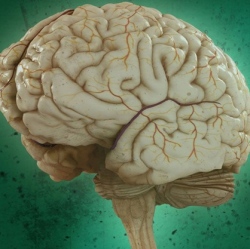
The Intelligence Advanced Research Projects Activity (IARPA) is looking for robot brains. Their “Request for Information for Neurally Inspired Computing Principles,” asks computer scientists and neuroscientists to answer at least one of four questions about learning, memory, timing, and coordination.
The goal: anticipate next-generation computers.
IARPA is the far-future research projects arm of America’s intelligence agencies, much like DARPA is for the Pentagon. The immediate applications of the tech aren’t always clear, so the agencies try and fund a bunch of blue-sky research to figure out where the technology is going to go. For example, here’s one of the four questions IARPA is asking people to answer:
Brains employ plasticity mechanisms that operate continuously and over multiple time scales to support online learning. Remarkably, brains continue to operate stably during ongoing plasticity.
For neuroscientists: *What practical benefits could our current understanding of the brain’s use of online learning over short and long time scales offer for next-generation computers? What gaps in understanding or challenges must first be overcome? *Have there been simulations or demonstrations of how online learning over short and long time scales can be used to perform real-world tasks?
For computer scientists: *What is the current state of research in the use of online learning over short and long time scales for digital or analog systems? *Are there existing hardware systems that utilize online learning over short and long time scales? If so, in which application areas and use cases have these been deployed, and what are their performance characteristics?
Looking at both brains and computers is a pretty good way to anticipate the future, and IARPA’s hardly the first to do it. Previous research in neural networks for machines have found that, in learning new skills, machines experience “catastrophic forgetting,” in which robots can’t learn more than one skill at a time without un-learning another.”
Figuring out a way for machines to learn without unlearning seems like a pretty big bet for the future. It’s definitely one that America’s intelligence agencies want to have on hand and understand first.
